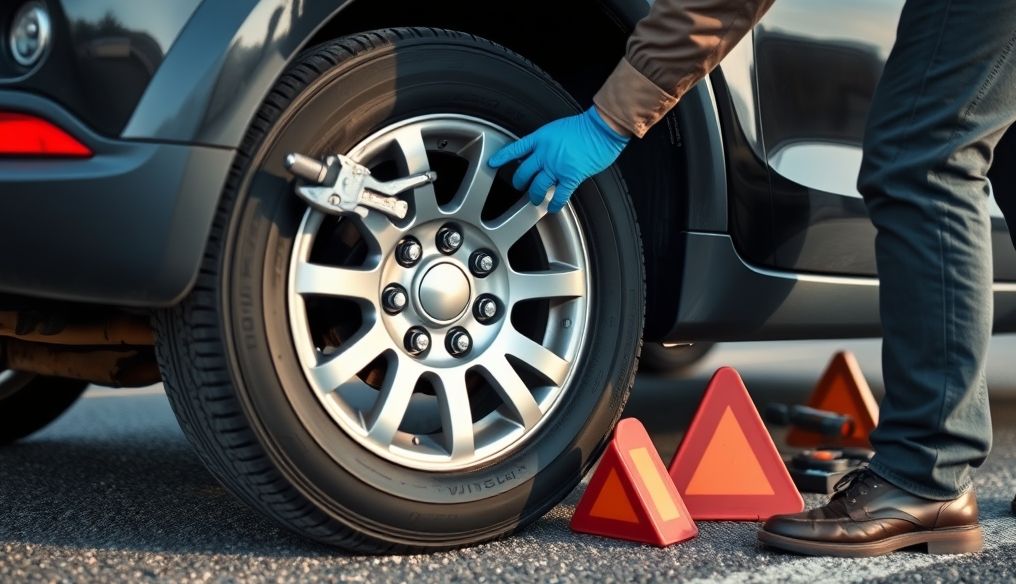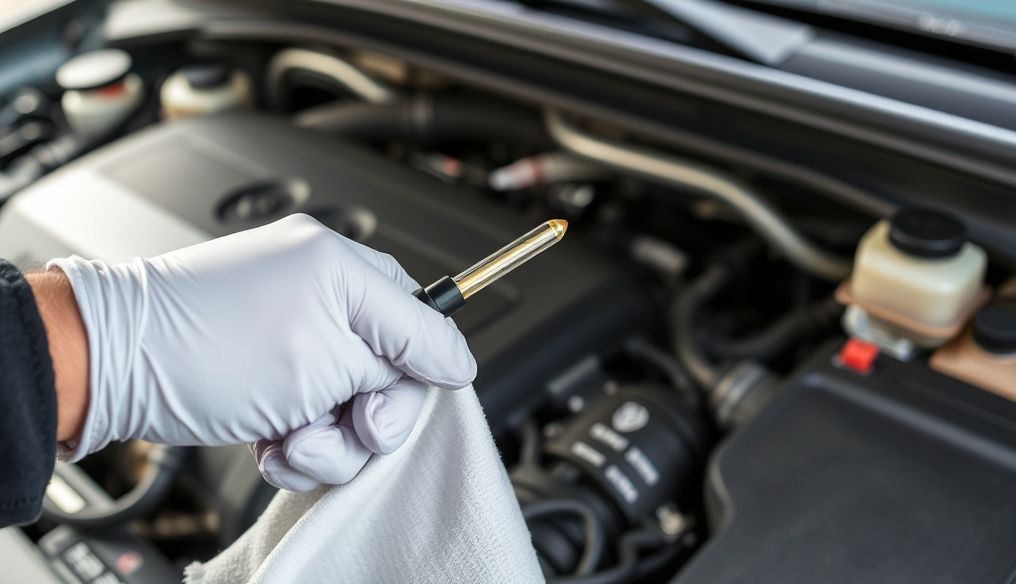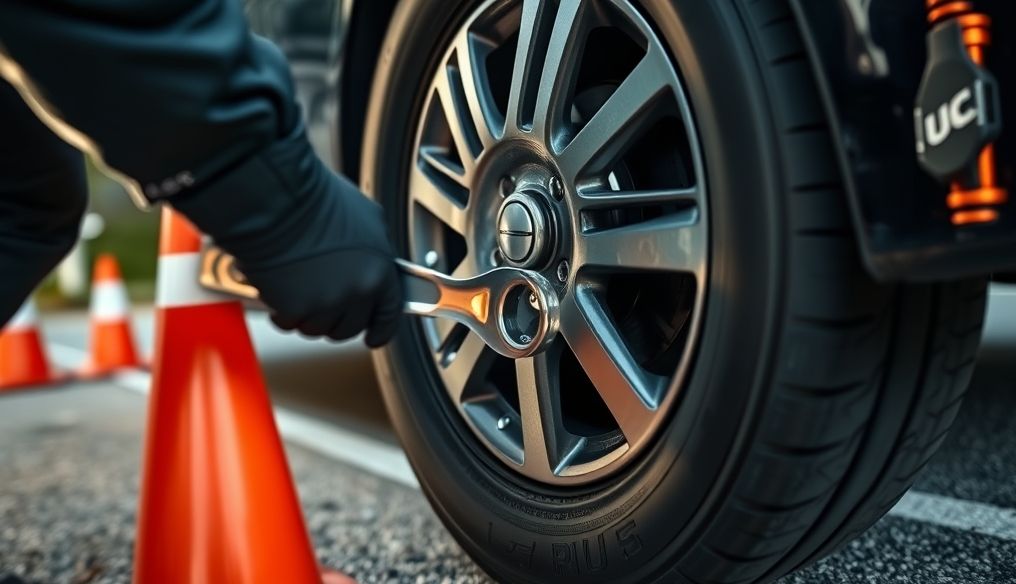How to Change a Flat Tire Yourself in an Emergency and Avoid Risks?
Changing a flat tire can seem like a daunting task, especially if you have no prior experience. However, learning this essential skill can save you time and money, and make you more self-reliant in roadside emergencies. In this article, we will provide you with a comprehensive step-by-step guide on how to change your car tire safely and efficiently.
Chapter 1: Essential Tools and Equipment
Before you begin, make sure you have all the necessary tools and equipment on hand. These tools are usually found in the car's tool kit, but it's a good idea to check them before embarking on a long journey. Here is a list of essential tools:
- Spare Tire: Ensure it is properly inflated and ready for use.
- Car Jack: Used to lift the car off the ground.
- Lug Wrench: For loosening and tightening wheel lug nuts.
- Wheel Chocks: To prevent the car from rolling.
- Gloves: To protect your hands.
- Reflective Warning Triangles or Flashlight: To alert other drivers.
- Owner's Manual: Contains specific information about your car, such as recommended jacking points.
Additional Tip:
Keep a towel or old cloth handy to clean your hands after you're done.
Chapter 2: Basic Safety Precautions
Safety is the top priority when changing a tire on the road. Follow these precautions to minimize risks:
- Find a Safe Location: Stop on a level, solid surface away from traffic. If possible, pull off the road as far as you can.
- Turn on Hazard Lights: To alert other drivers.
- Place Reflective Warning Triangles: At a reasonable distance behind the car to warn oncoming traffic.
- Use Wheel Chocks: Place them behind the tires on the same axle as the flat tire to prevent the car from rolling.
- Never Work Under a Car Without Jack Stands: The jack alone is not enough to secure the car. Use jack stands if you are going to work under the car.
Chapter 3: Step-by-Step Tire Changing Instructions
Now, let's move on to the step-by-step instructions for changing the tire:
- Loosen the Lug Nuts: Using the lug wrench, loosen the lug nuts slightly. Do not remove them completely at this stage. Remember to turn the wrench counterclockwise to loosen the nuts. You may need to use your foot to apply extra force.
- Position the Jack Correctly: Locate the designated jacking point in the owner's manual. There are usually markings or notches on the car's frame indicating these points. Make sure the jack is stable and secure before starting to lift.
- Raise the Car: Raise the car until the flat tire is off the ground with enough clearance to remove the tire and install the spare.
- Remove the Lug Nuts Completely: After raising the car, completely remove the lug nuts and keep them in a safe place.
- Remove the Flat Tire: Pull the flat tire away from the car. You may need to wiggle the tire a bit if it is stuck.
- Mount the Spare Tire: Place the spare tire on the wheel hub, making sure the lug nut holes are aligned.
- Hand-Tighten the Lug Nuts: Put the lug nuts back on and tighten them by hand as much as possible.
- Lower the Car: Slowly lower the car using the jack until the tire touches the ground.
- Fully Tighten the Lug Nuts: Using the lug wrench, fully tighten the lug nuts. Make sure to tighten them in a crisscross pattern (like a star) to ensure even pressure distribution.
- Lower the Car Completely: Lower the car completely and remove the jack.
- Recheck the Lug Nuts: After driving a short distance (about 50-100 kilometers), recheck the lug nuts to make sure they are still properly tightened.
Chapter 4: Dealing with the Flat Tire
After changing the tire, you have a few options for dealing with the flat tire:
- Repair the Tire: If the puncture is small, it may be possible to repair the tire at a tire repair shop.
- Replace the Tire: If the puncture is large or the tire is severely damaged, you will need to replace it with a new tire.
- Store the Tire: If you plan to repair or replace the tire later, store it in a cool, dry place away from direct sunlight.
Chapter 5: Tips to Avoid Flat Tires
Although flat tires are sometimes unavoidable, there are some things you can do to reduce the chances of them happening:
- Maintain Proper Tire Pressure: Check your tire pressure regularly and adjust it according to the manufacturer's recommendations.
- Inspect Tires Regularly: Look for any signs of damage, such as cracks or bulges.
- Avoid Driving on Rough Roads: If possible, avoid driving on rough or pothole-filled roads.
- Replace Old Tires: Even if the tires are not damaged, replace them after a certain period of time (usually 6-10 years) as the rubber deteriorates over time.
Chapter 6: Types of Spare Tires
There are different types of spare tires, and it's important to know what type of spare tire your car has:
- Full-Size Spare Tire: It is the same size and type as the original tires on your car. You can use it permanently until you repair or replace the flat tire.
- Temporary Spare Tire (Donut): It is smaller and lighter than a full-size spare tire. It should only be used temporarily, and there are usually speed and distance restrictions.
- Tire Repair Kit: This kit usually includes a sealant and a small air compressor. It can be used to temporarily repair small punctures.
Chapter 7: What to Do If You Can't Change the Tire Yourself?
If you are not confident in your ability to change the tire yourself, or if you are in an unsafe location, it is best to call for help. You can contact a roadside assistance service or a towing company. Be sure to tell them your location and the type of problem you are experiencing.
Chapter 8: Frequently Asked Questions About Changing Car Tires
Q: How often should I check my tire pressure?
A: It is recommended to check your tire pressure at least once a month, and before taking long trips.
Q: What is the correct tire pressure for my car?
A: You can find the recommended tire pressure in the owner's manual or on a sticker located on the driver's side door or inside the fuel filler door.
Q: Can I use any type of jack to lift my car?
A: No, you should only use the jack specifically designed for your car. Using an inappropriate jack can cause damage to the car or injury.
Chapter 9: Conclusion
Changing your car tire yourself is a valuable skill that can save you in emergencies. By following the steps outlined in this article and taking the necessary safety precautions, you can change the tire safely and efficiently and get back on the road as quickly as possible. Remember, practice makes perfect, so don't hesitate to practice changing the tire in a safe place before you actually need to.




